Family: Tenthredinidae
Family common name: common sawflies
Subfamily: Selandriinae
Tribe: Dolerini
Genus: Prionourgus Goulet, 1986
Subgenera: none
The Tenthredinidae are the most species-rich family and are found throughout the world, in all continents but Antarctica. They are known as the “common sawflies.” They can generally be recognized by a cylindrical body and long, segmented antennaeantenna:
the sensory organ emerging from the front of the head, usually between the compound eyes and above the clypeus; includes the flagellum, scape and pedicel
 . Otherwise, they come in a variety of colors, sizes, and forms (Goulet 1992Goulet 1992:
. Otherwise, they come in a variety of colors, sizes, and forms (Goulet 1992Goulet 1992:
Goulet H. 1992. The genera and subgenera of the sawflies of Canada and Alaska: Hymenoptera. Symphyta. The insects and arachnids of Canada. Part 20. Agriculture Canada Publication.).
Sawflies in the Selandriinae subfamily are relatively small and slender. The range of Selandriinae is worldwide; it occurs on all continents except Antarctica (Goulet 1992Goulet 1992:
Goulet H. 1992. The genera and subgenera of the sawflies of Canada and Alaska: Hymenoptera. Symphyta. The insects and arachnids of Canada. Part 20. Agriculture Canada Publication.). It is the most common and diverse group of tenthredinids in tropical regions, particularly in Central America, South America, and Southeast Asia (Smith 1969eSmith 1969e:
Smith DR. 1969e. Nearctic Sawflies. II. Selandriinae: Adults (Hymenoptera: Tenthredinidae). Technical Bulletin, U.S. Department of Agriculture 1398: 1-48.). Selandriinae contains the only known sawflies that feed on non-vascular plants, specifically ferns (Smith et al. 2013Smith et al. 2013:
Smith DR, Janzen DH and Hallwachs W. 2013. Food plants and life histories of sawflies of the families Argidae and Tenthredinidae (Hymenoptera) in Costa Rica, a supplement. Journal of Hymenoptera Research 35: 17-31. https://doi.org/10.3897/JHR.35.5496). The subfamily can be distinguished from other subfamilies by wing venationvenation:
the network of veins on a wing
(Goulet 1992Goulet 1992:
Goulet H. 1992. The genera and subgenera of the sawflies of Canada and Alaska: Hymenoptera. Symphyta. The insects and arachnids of Canada. Part 20. Agriculture Canada Publication.).
Prionourgus is monotypicmonotypic:
describes having only one representative; ex. a genus that includes only one species
. Prionourgus salmani is a mainly black sawfly with light yellow coloring on the legs. It is known only from southern California (Goulet 1986Goulet 1986:
Goulet H. 1986. The genera and species of the Nearctic Dolerini (Symphyta: Tenthredinidae: Selandriinae): classification and phylogeny. Memoirs of the Entomological Society of Canada 135: 1-208.).
There is a single described extantextant:
in existence; opposite of extinct
species worldwide, and it is North American (Taeger et al. 2010Taeger et al. 2010:
Taeger A, Blank SM, and Liston AD. 2010. World Catalog of Symphyta (Hymenoptera). Zootaxa 2580: 1-1064.).
Subfamily characters
 vein Rs+M curved near intersection with veinvein:
vein Rs+M curved near intersection with veinvein: Sc+R (Smith 1969eSmith 1969e:
Sc+R (Smith 1969eSmith 1969e:Genus characters
 shallowly emarginated (Goulet 1986Goulet 1986:
shallowly emarginated (Goulet 1986Goulet 1986: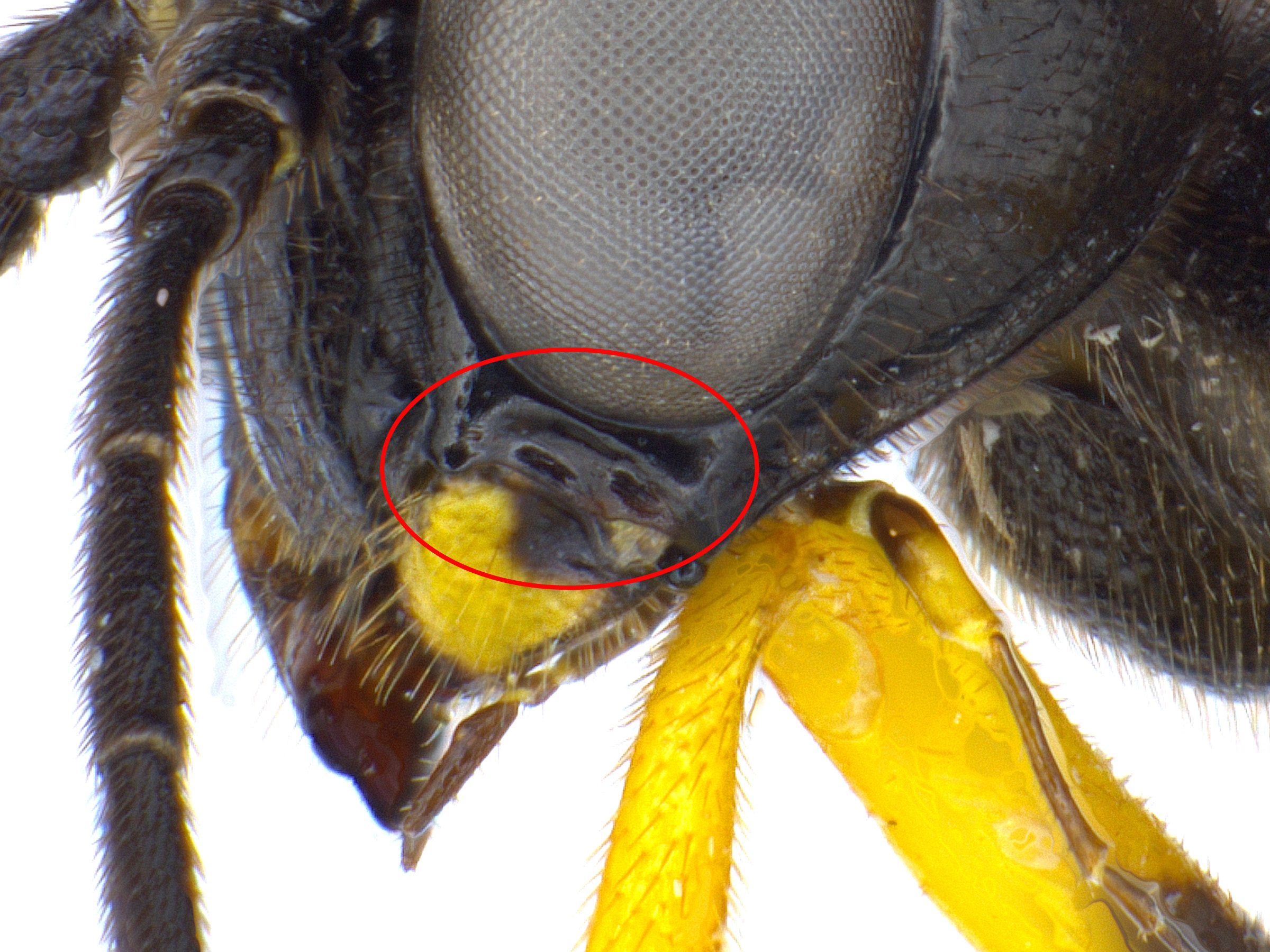 length less than one-fifth the diameter of the antennal socket (Goulet 1986Goulet 1986:
length less than one-fifth the diameter of the antennal socket (Goulet 1986Goulet 1986: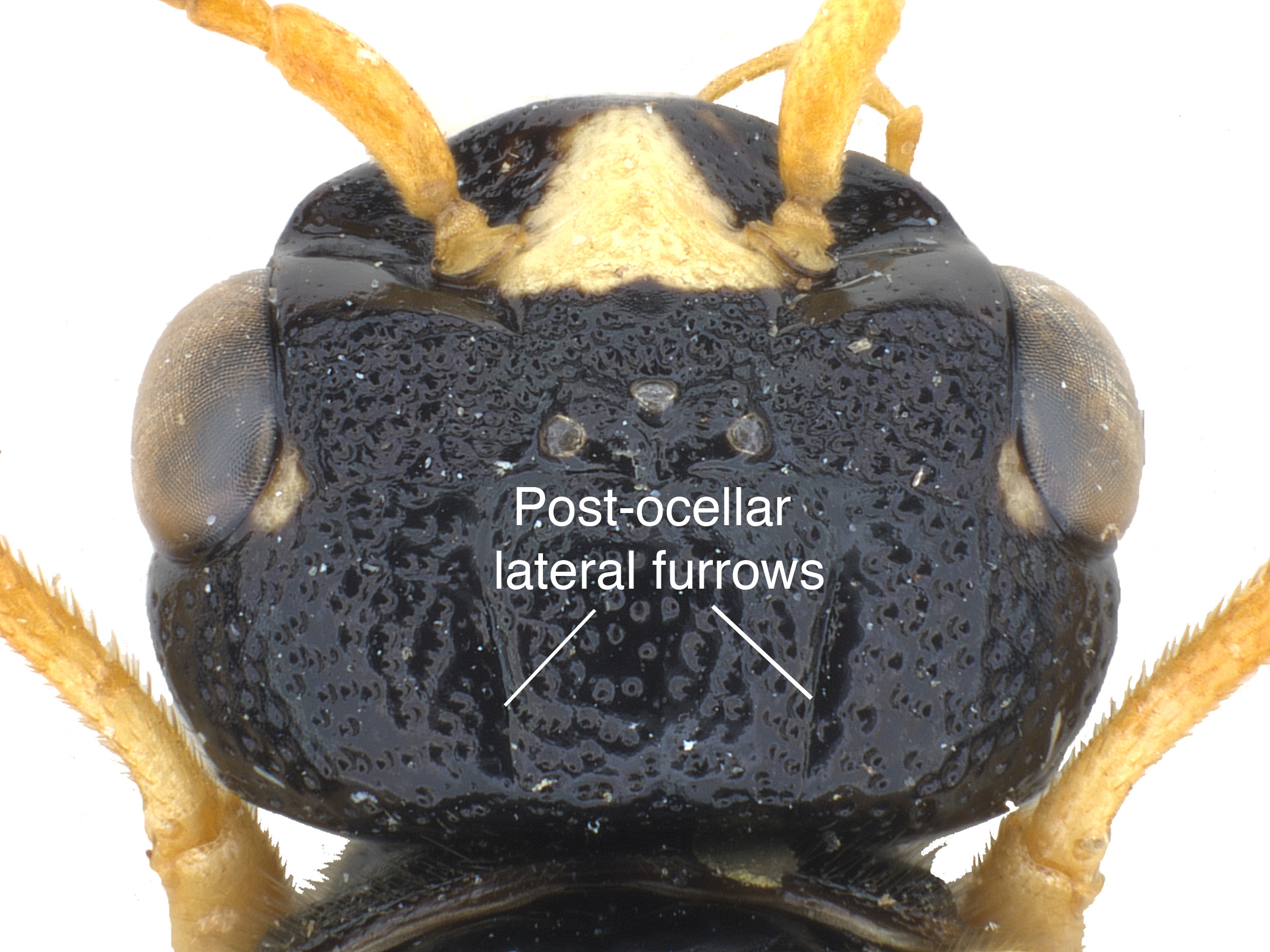 dividing the metepimeronmetepimeron:
dividing the metepimeronmetepimeron: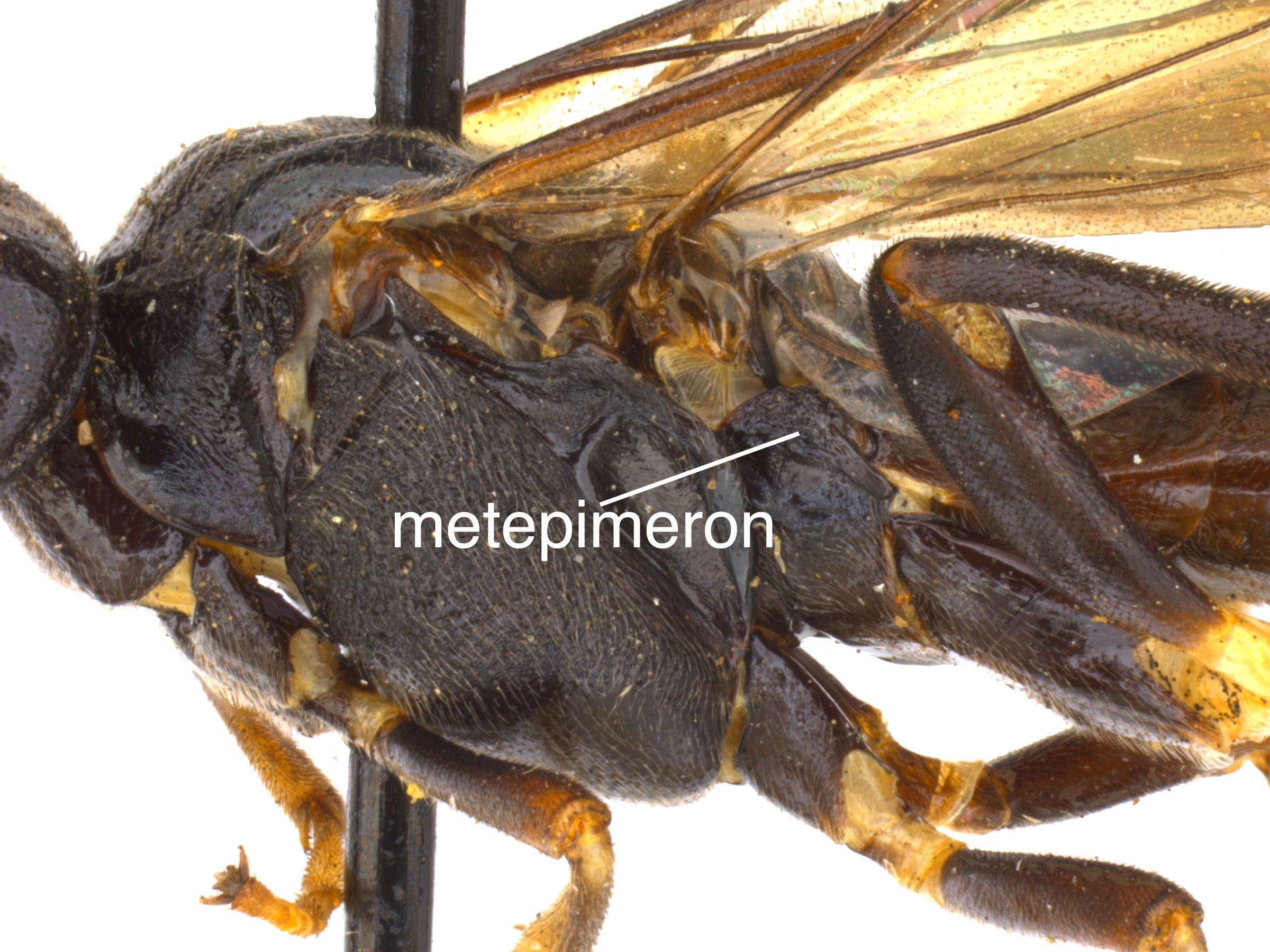 and metepisternummetepisternum:
and metepisternummetepisternum: (Goulet 1986Goulet 1986:
(Goulet 1986Goulet 1986: vein M meeting Sc+R at intersection of Rs+M and Sc+R (Goulet 1992Goulet 1992:
vein M meeting Sc+R at intersection of Rs+M and Sc+R (Goulet 1992Goulet 1992: cellcell:
cellcell: 1M narrowed at apexapex:
1M narrowed at apexapex: vein 2r-m usually absent (Goulet 1992Goulet 1992:
vein 2r-m usually absent (Goulet 1992Goulet 1992: anal crossveinanal crossvein:
anal crossveinanal crossvein: anal crossveinanal crossvein:
anal crossveinanal crossvein: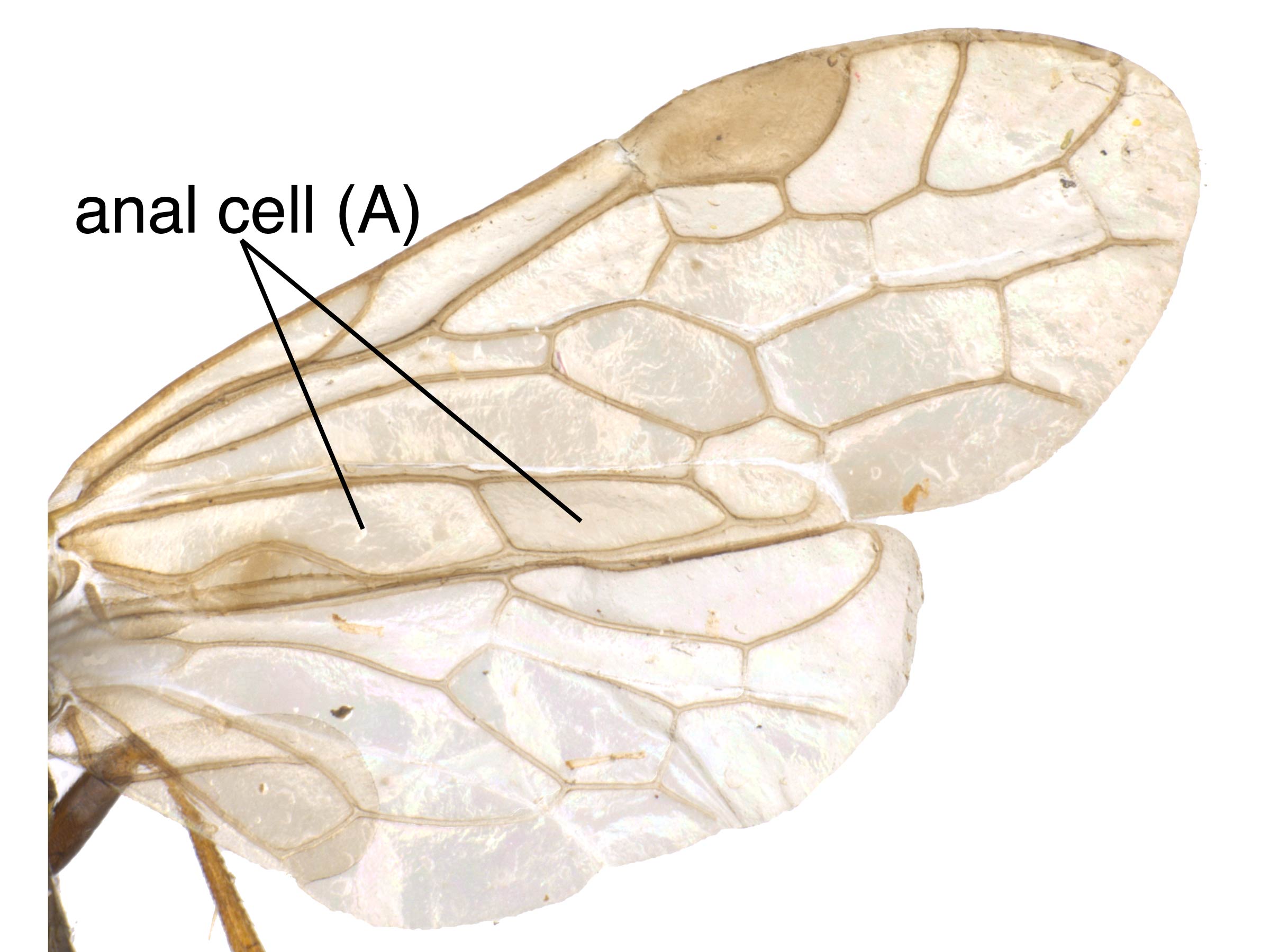 (Goulet 1986Goulet 1986:
(Goulet 1986Goulet 1986: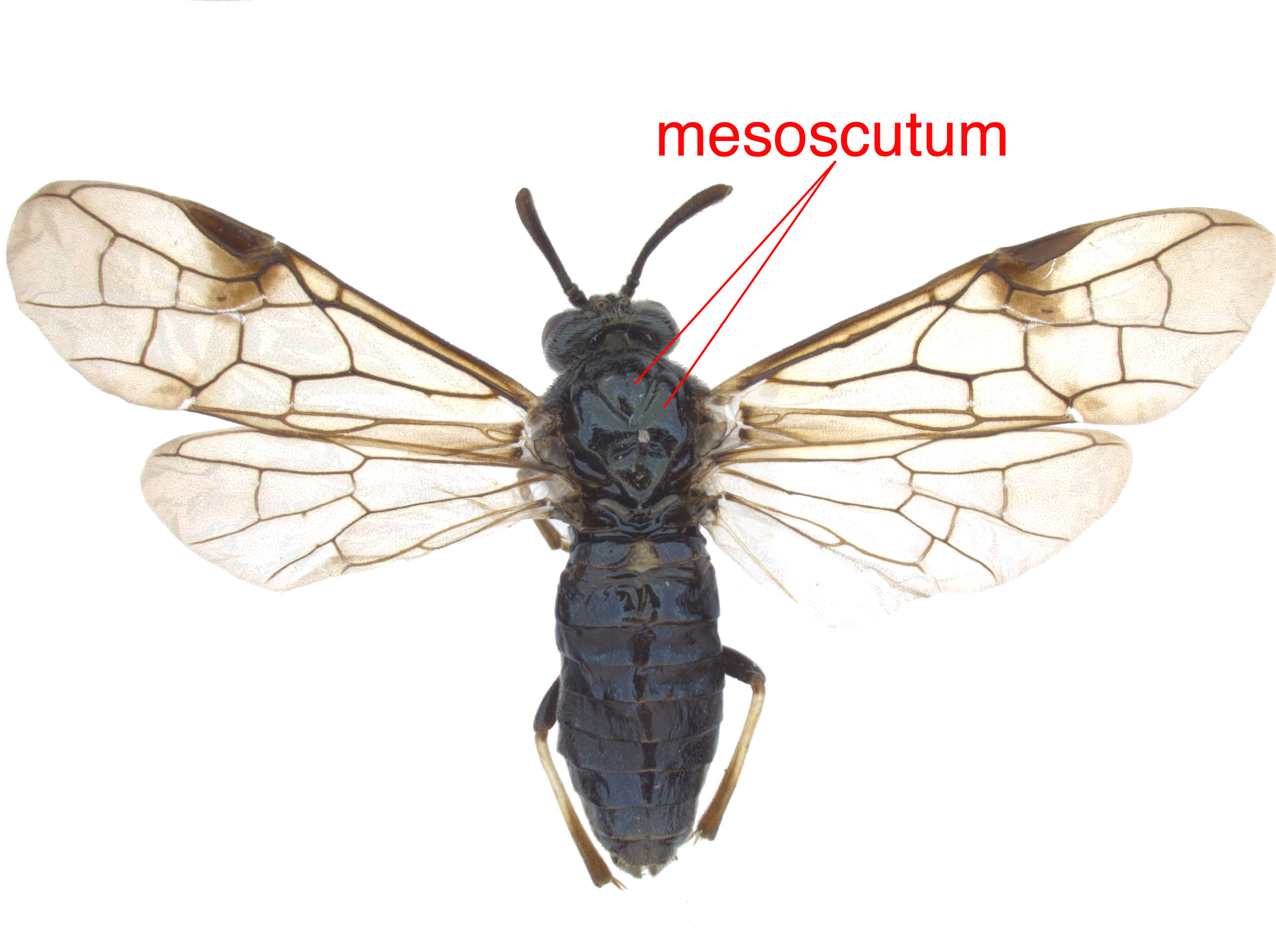 (Goulet 1986Goulet 1986:
(Goulet 1986Goulet 1986: wide medially; membranous surface small (Goulet 1986Goulet 1986:
wide medially; membranous surface small (Goulet 1986Goulet 1986: less than width of one cenchruscenchrus:
less than width of one cenchruscenchrus: (Goulet 1986Goulet 1986:
(Goulet 1986Goulet 1986:Prionourgus can be confused with similar species in the subfamily Selandriinae. It can be distinguished from most other genera by the distinct punctures on the head and mesoscutummesoscutum:
the central and dorsal portion of the thorax between the scutellum and postnotum
 , and from the other Dolerini genus in the tribe, Dolerus, by the malar spacemalar space:
, and from the other Dolerini genus in the tribe, Dolerus, by the malar spacemalar space:
the minimum distance between the base of the mandible and the ventral margin of the compound eye
 length and the clypeusclypeus:
length and the clypeusclypeus:
sclerotized area on the front of the head located between the antennal insertions and labrum
 margin (Goulet 1992Goulet 1992:
margin (Goulet 1992Goulet 1992:
Goulet H. 1992. The genera and subgenera of the sawflies of Canada and Alaska: Hymenoptera. Symphyta. The insects and arachnids of Canada. Part 20. Agriculture Canada Publication.).
none
unknown
unknown
World: The genus is North American (Taeger et al. 2010Taeger et al. 2010:
Taeger A, Blank SM, and Liston AD. 2010. World Catalog of Symphyta (Hymenoptera). Zootaxa 2580: 1-1064.)
North America: Prionourgus salmani is known from San Bernardino County in southern California (Goulet 1986Goulet 1986:
Goulet H. 1986. The genera and species of the Nearctic Dolerini (Symphyta: Tenthredinidae: Selandriinae): classification and phylogeny. Memoirs of the Entomological Society of Canada 135: 1-208.).
Map data from the Smithsonian National Museum of Natural History Entomology Collection (USNM)
Details about data used for maps can be found here.